Durability and Tradition Drives Family Timber Framing Business
By Leah Ogonek, Wood-Mizer Contributing Author

On a late-winter morning, Dan Ogonek and his father, Dr. Joseph Ogonek, arrive at their tree farm in East-Central Ohio. Recent snow clings to branches overhead. Despite the cold and the day of work ahead, both exhale with satisfaction. This is where they love to be.


Purchased in 1971, the land represents cherished memories for the Ogonek family. The eleven children of Dr. and Mrs. Ogonek enjoyed time spent there camping, playing, and planting trees, working together to achieve American Tree Farm System Certification since 1975. The story of Ogonek Custom Hardwoods begins here, growing out of a family’s love for a place that represents much more than an investment.
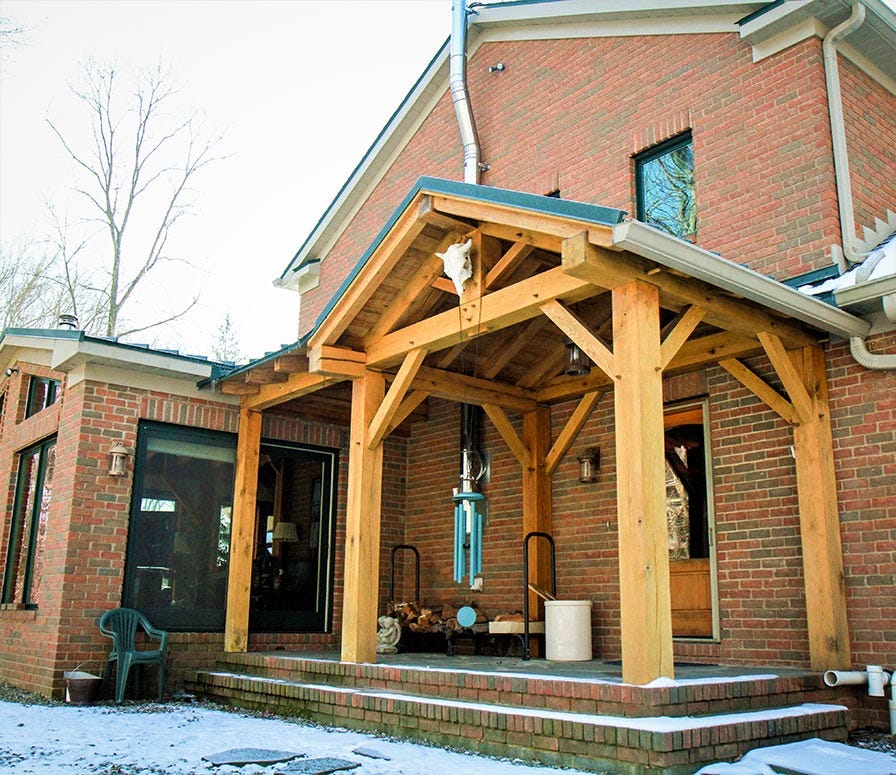

Noticing 10 acres of white pine seedlings planted by the previous owner, the family began researching tree-farming and working on timber-stand improvements. A forestry inspector recommended taking down some trees to correct a heavy wood load. Reluctant to cut walnut logs into firewood, Dr. Ogonek looked into portable sawmills. His search led him to the annual Paul Bunyan Show, then held in Hocking Hills, Ohio, where he encountered Wood-Mizer sawmills for the first time. Compared against other sawmills he had considered, “There really was no choice,” he says.
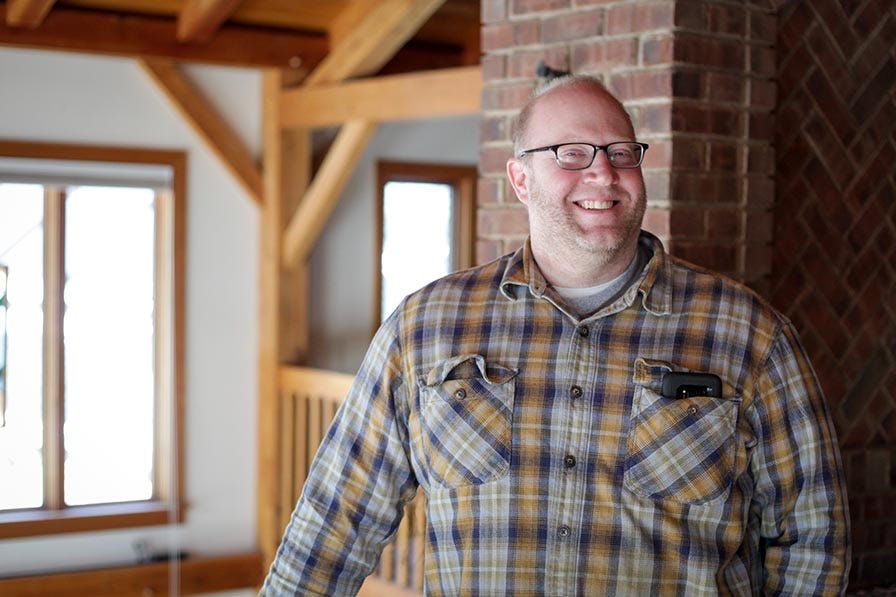

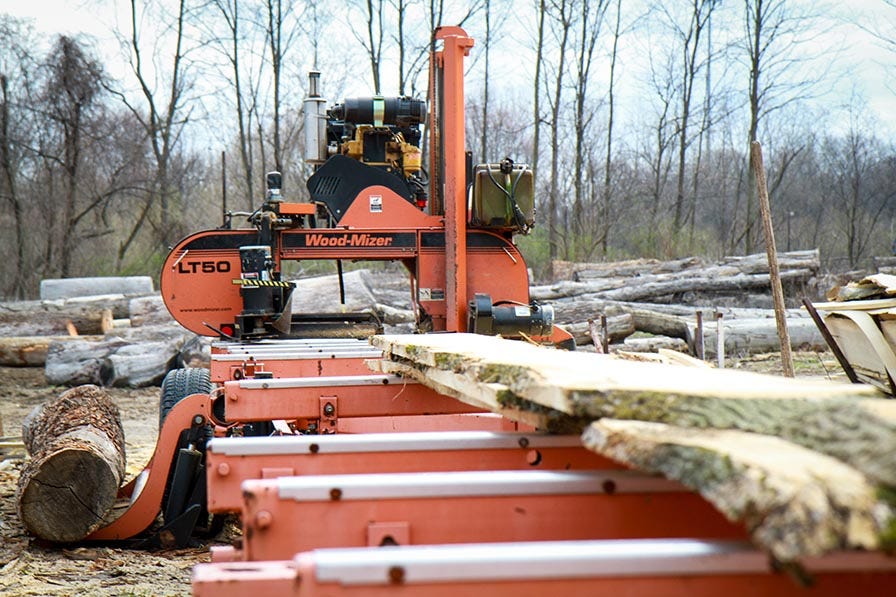

Dr. Ogonek bought the family’s first Wood-Mizer, an LT40 with a 12-foot extension, in 1985. He and his son, Pete, travelled to Indianapolis for onsite training. Since then, four of the eight Ogonek sons have at some point worked with the sawmill, often during school breaks to earn money. Today and three Wood-Mizer sawmills later, Dr. Ogonek’s second youngest son Dan is at the helm. Since the early 2000’s Dan has been refocusing the business from a portable sawmill operation to a full service custom timber frame construction company. But, he says, “Our Wood-Mizer came first, and we built our business plan around it. We’ve never operated as a company without a Wood-Mizer.”
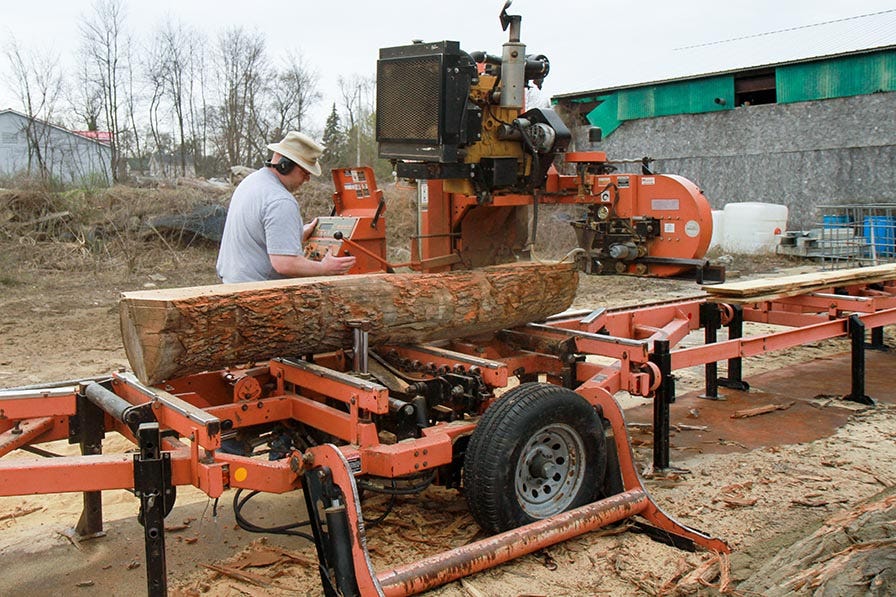

A History major in college, Dan has always valued longevity, durability, and tradition. Timber framing represents all three. As a construction method, timber framing has been used for millennia throughout the world, and structures still stand that are hundreds of years old. Dan appreciates the idea that the structures he and his team are building can serve families for generations and hopes to build one for his own family one day.


Dan’s customers appreciate the aesthetics of timber framing and a level of craftsmanship that’s difficult to find. Timber frames also create a sense of connection to nature and to the land. “We often use trees from the customer’s own property,” Dan says. Yet timber framing is an option that is not widely known or regularly considered by families building homes today, especially when they see the first price estimate. “Timber frames are not cheap, they are a custom-built home,” says Dan. “Many people are often comparing it to a stick frame that only has a 50 year lifespan instead of centuries. Probably because that’s what they’re familiar with. But I think that might be changing for some, as people start to look more at sustainability.”
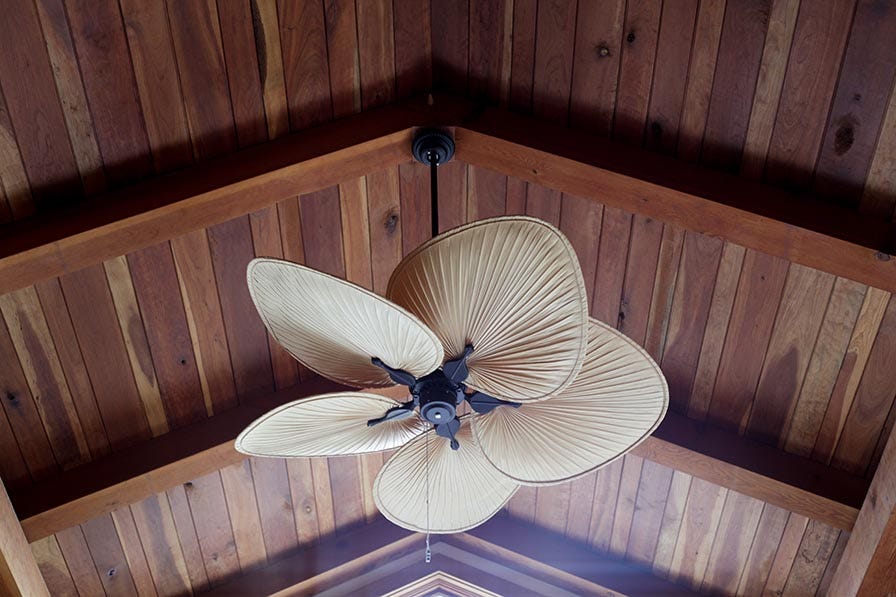

Most often customers approach Ogonek Custom Hardwoods (OCH) with a floor plan. Dan works with an engineer to draft that design as a timber frame. Roman Troyer, OCH’s master timber framer also provides input into the design and joinery that would work best for a particular frame. For cost-conscious customers who don’t yet have a specific plan in mind, OCH offers two frame designs, one with a modern aesthetic and one more traditional for a modest-sized home. These are based on simple, repeatable joinery patterns that reduce labor costs and time, putting hand-crafted timber frame homes within reach of smaller budgets.
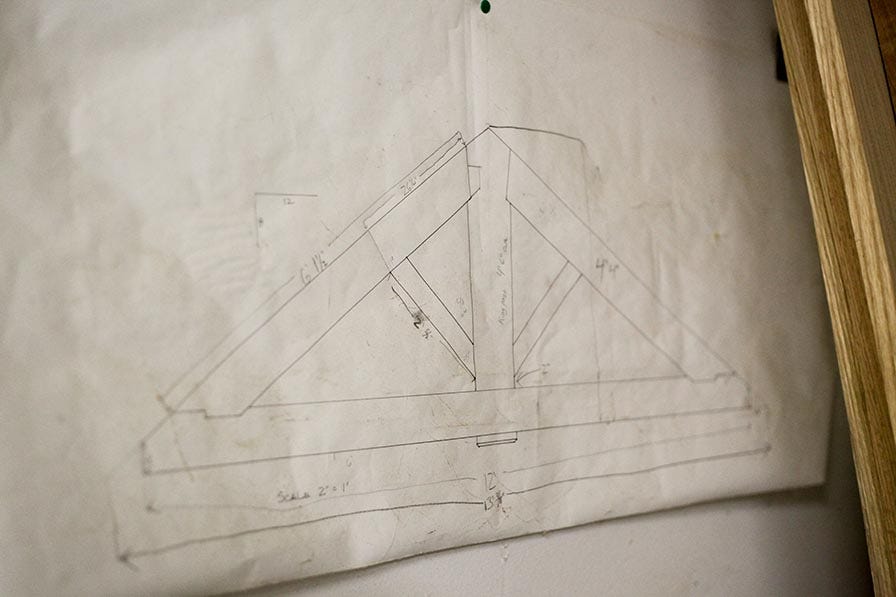

Once plans are finalized, Dan saws the timbers needed on the Wood-Mizer, an LT50 purchased in 2008. Working on the sawmill is his favorite task. “If I don’t do the physical work for a few days I start to get listless and feel like I’m not meeting my purpose,” says Dan. Dan uses a 24-foot extension on the Wood-Mizer to cut the longer timbers often needed for larger frames. Once the timbers are sawn they are often sent to a planing mill, returning smooth and square.
Led by Roman Troyer and construction foreman Jake Grant, layout and joinery are completed with the planed timbers at OCH’s workshop in Barberton, Ohio. They use custom-designed wooden marking gauges, handmade by Roman, for layout, and tenon gauges for checking the size of tenons. Hand tools used for joinery include mallets and chisels, hand planes, and hand saws. Circular saws, chain mortiser, and routers are the only power tools used in joinery. Timbers are then sanded, finished, and peg holes are drilled to prepare for assembly. The team checks to ensure trusses fit together properly before they are loaded onto a truck for transportation to the construction site.
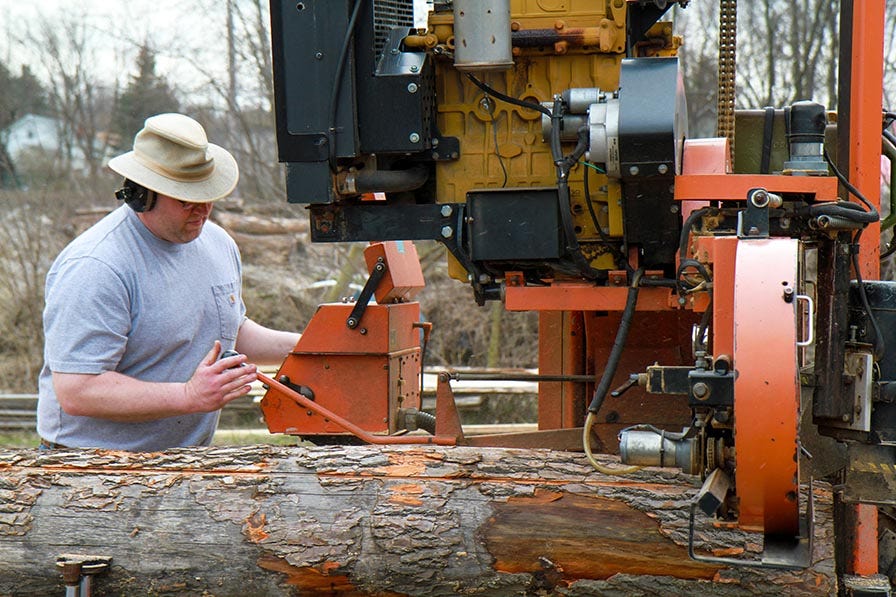

Onsite frame raising involves first assembling trusses and bents (wall or post sections of the frame) on the ground, then using a crane to lift them into place. The team uses a variety of tools to aid in assembly, including cordless drills, wooden mallets for driving pegs, and commanders for pushing larger timbers into position. Depending on the size and complexity of the frame, assembly can take 2 days to a week or more. The team has worked on everything from very simple to complex, and small to large frames in Ohio and in nearby states.
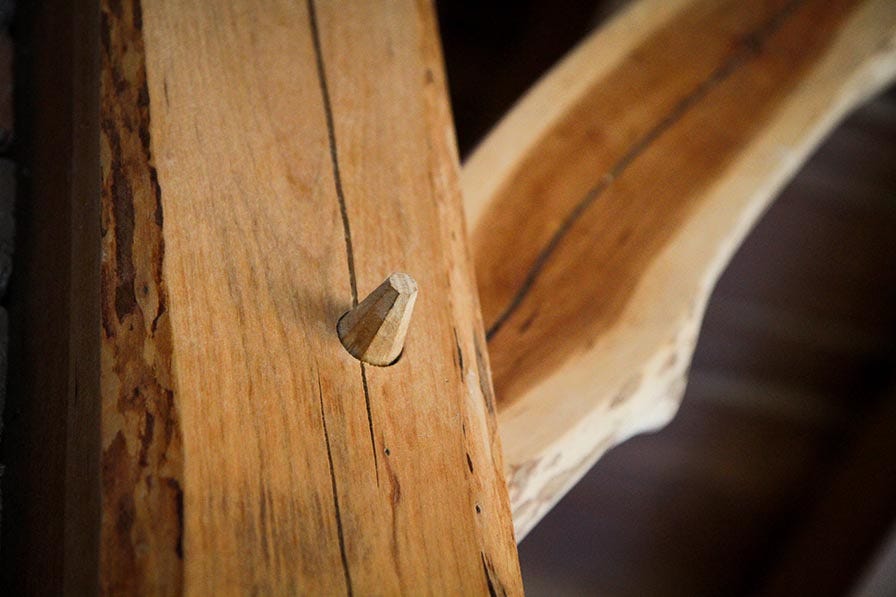

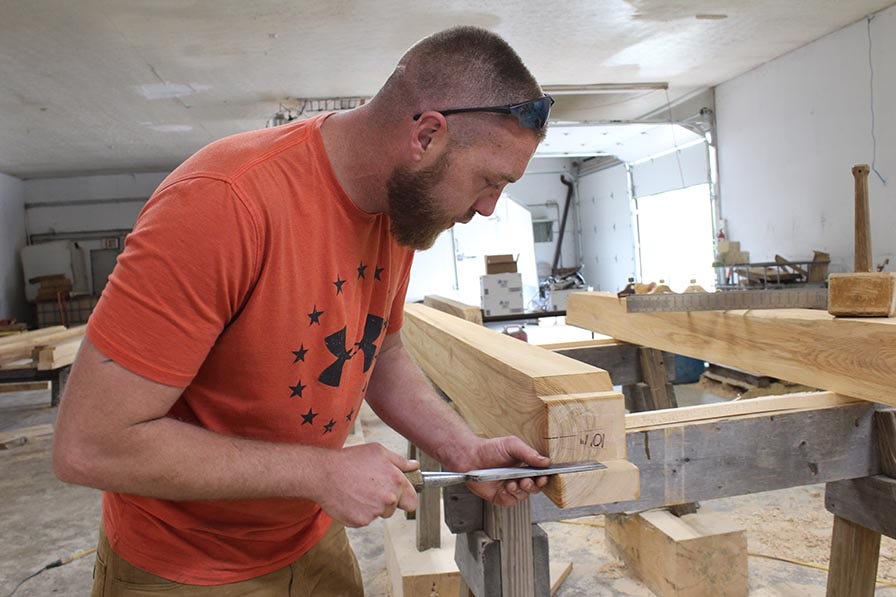

For Dan, if working on the Wood-Mizer is the best part, completing a timber frame is a close second. “When I see the customer enjoying their frame or any time a customer points to a beam and can say ‘that tree came from right over there.’ Sometimes I don’t know who enjoys that feeling more, myself or the customer.”


These days the rest of the Ogonek family remains involved when they can. “Dad gives me advice, talks through issues and does some support tasks,” says Dan. Dan’s siblings and wife, Leah, lend expertise from the different fields they work in now, such as engineering, architecture, electrical setup support, and web design. Ogonek Custom Hardwoods is a business that has deep roots within their family and Dan hopes will always be that way.
On a late-winter morning, Dan Ogonek and his father, Dr. Joseph Ogonek, arrive at their tree farm in East-Central Ohio. Recent snow clings to branches overhead. Despite the cold and the day of work ahead, both exhale with satisfaction. This is where they love to be.

Purchased in 1971, the land represents cherished memories for the Ogonek family. The eleven children of Dr. and Mrs. Ogonek enjoyed time spent there camping, playing, and planting trees, working together to achieve American Tree Farm System Certification since 1975. The story of Ogonek Custom Hardwoods begins here, growing out of a family’s love for a place that represents much more than an investment.

Noticing 10 acres of white pine seedlings planted by the previous owner, the family began researching tree-farming and working on timber-stand improvements. A forestry inspector recommended taking down some trees to correct a heavy wood load. Reluctant to cut walnut logs into firewood, Dr. Ogonek looked into portable sawmills. His search led him to the annual Paul Bunyan Show, then held in Hocking Hills, Ohio, where he encountered Wood-Mizer sawmills for the first time. Compared against other sawmills he had considered, “There really was no choice,” he says.


Dr. Ogonek bought the family’s first Wood-Mizer, an LT40 with a 12-foot extension, in 1985. He and his son, Pete, travelled to Indianapolis for onsite training. Since then, four of the eight Ogonek sons have at some point worked with the sawmill, often during school breaks to earn money. Today and three Wood-Mizer sawmills later, Dr. Ogonek’s second youngest son Dan is at the helm. Since the early 2000’s Dan has been refocusing the business from a portable sawmill operation to a full service custom timber frame construction company. But, he says, “Our Wood-Mizer came first, and we built our business plan around it. We’ve never operated as a company without a Wood-Mizer.”

A History major in college, Dan has always valued longevity, durability, and tradition. Timber framing represents all three. As a construction method, timber framing has been used for millennia throughout the world, and structures still stand that are hundreds of years old. Dan appreciates the idea that the structures he and his team are building can serve families for generations and hopes to build one for his own family one day.
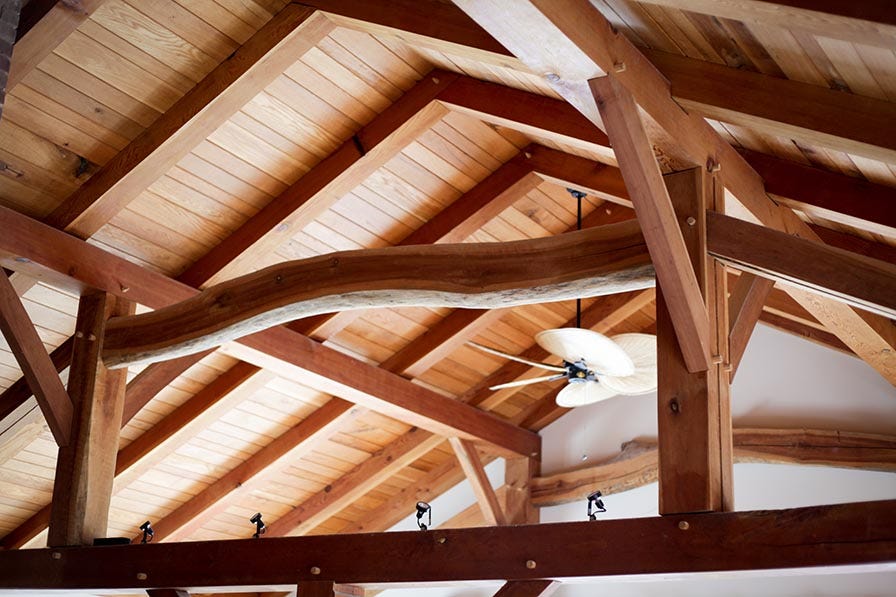
Dan’s customers appreciate the aesthetics of timber framing and a level of craftsmanship that’s difficult to find. Timber frames also create a sense of connection to nature and to the land. “We often use trees from the customer’s own property,” Dan says. Yet timber framing is an option that is not widely known or regularly considered by families building homes today, especially when they see the first price estimate. “Timber frames are not cheap, they are a custom-built home,” says Dan. “Many people are often comparing it to a stick frame that only has a 50 year lifespan instead of centuries. Probably because that’s what they’re familiar with. But I think that might be changing for some, as people start to look more at sustainability.”

Most often customers approach Ogonek Custom Hardwoods (OCH) with a floor plan. Dan works with an engineer to draft that design as a timber frame. Roman Troyer, OCH’s master timber framer also provides input into the design and joinery that would work best for a particular frame. For cost-conscious customers who don’t yet have a specific plan in mind, OCH offers two frame designs, one with a modern aesthetic and one more traditional for a modest-sized home. These are based on simple, repeatable joinery patterns that reduce labor costs and time, putting hand-crafted timber frame homes within reach of smaller budgets.

Once plans are finalized, Dan saws the timbers needed on the Wood-Mizer, an LT50 purchased in 2008. Working on the sawmill is his favorite task. “If I don’t do the physical work for a few days I start to get listless and feel like I’m not meeting my purpose,” says Dan. Dan uses a 24-foot extension on the Wood-Mizer to cut the longer timbers often needed for larger frames. Once the timbers are sawn they are often sent to a planing mill, returning smooth and square.
Led by Roman Troyer and construction foreman Jake Grant, layout and joinery are completed with the planed timbers at OCH’s workshop in Barberton, Ohio. They use custom-designed wooden marking gauges, handmade by Roman, for layout, and tenon gauges for checking the size of tenons. Hand tools used for joinery include mallets and chisels, hand planes, and hand saws. Circular saws, chain mortiser, and routers are the only power tools used in joinery. Timbers are then sanded, finished, and peg holes are drilled to prepare for assembly. The team checks to ensure trusses fit together properly before they are loaded onto a truck for transportation to the construction site.

Onsite frame raising involves first assembling trusses and bents (wall or post sections of the frame) on the ground, then using a crane to lift them into place. The team uses a variety of tools to aid in assembly, including cordless drills, wooden mallets for driving pegs, and commanders for pushing larger timbers into position. Depending on the size and complexity of the frame, assembly can take 2 days to a week or more. The team has worked on everything from very simple to complex, and small to large frames in Ohio and in nearby states.


For Dan, if working on the Wood-Mizer is the best part, completing a timber frame is a close second. “When I see the customer enjoying their frame or any time a customer points to a beam and can say ‘that tree came from right over there.’ Sometimes I don’t know who enjoys that feeling more, myself or the customer.”
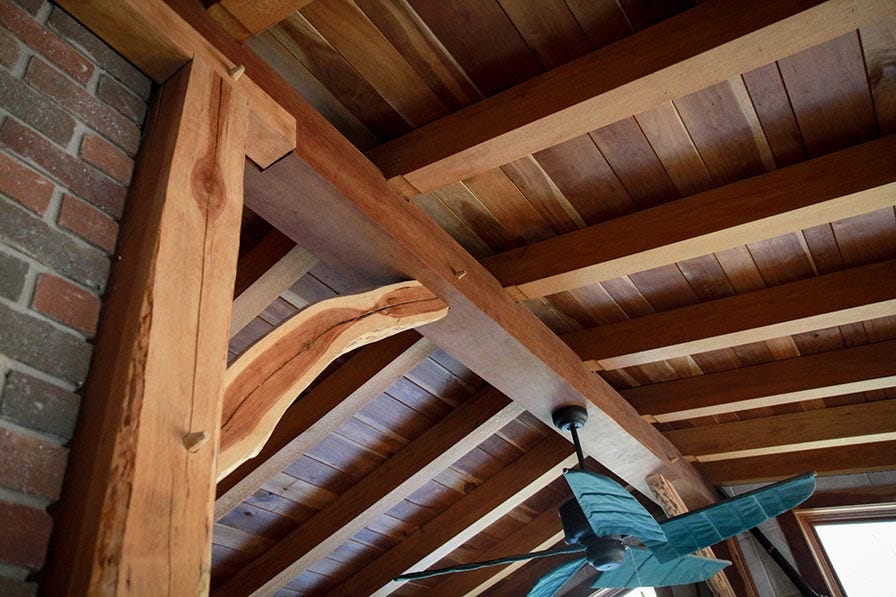
These days the rest of the Ogonek family remains involved when they can. “Dad gives me advice, talks through issues and does some support tasks,” says Dan. Dan’s siblings and wife, Leah, lend expertise from the different fields they work in now, such as engineering, architecture, electrical setup support, and web design. Ogonek Custom Hardwoods is a business that has deep roots within their family and Dan hopes will always be that way.

